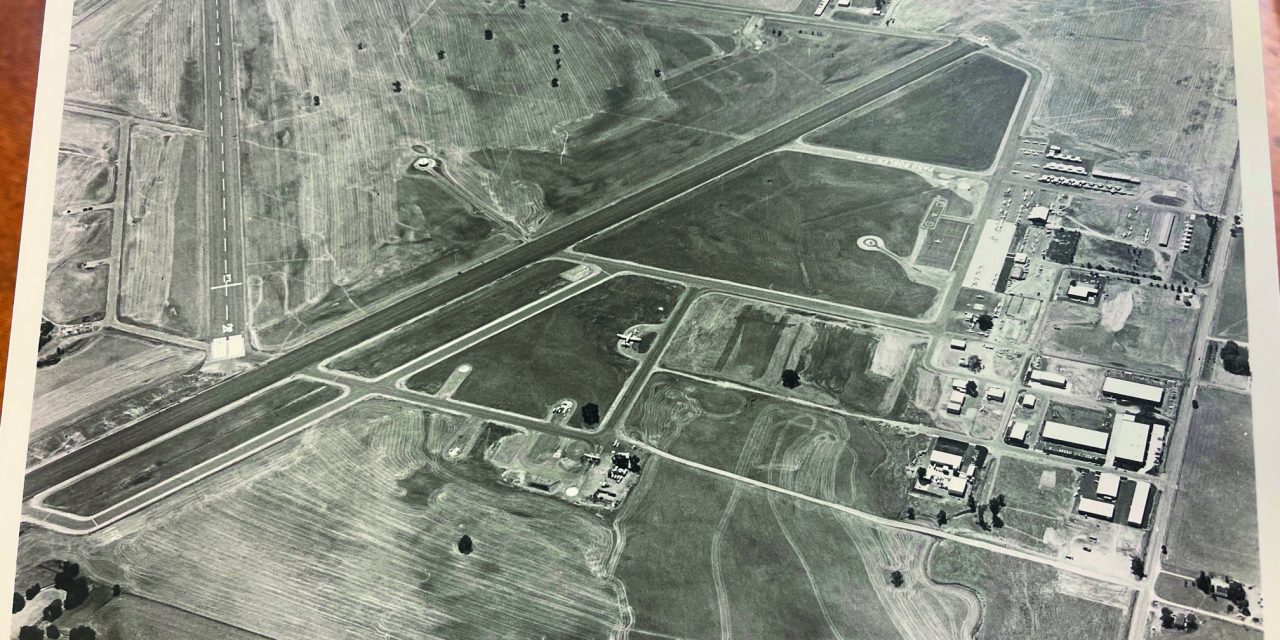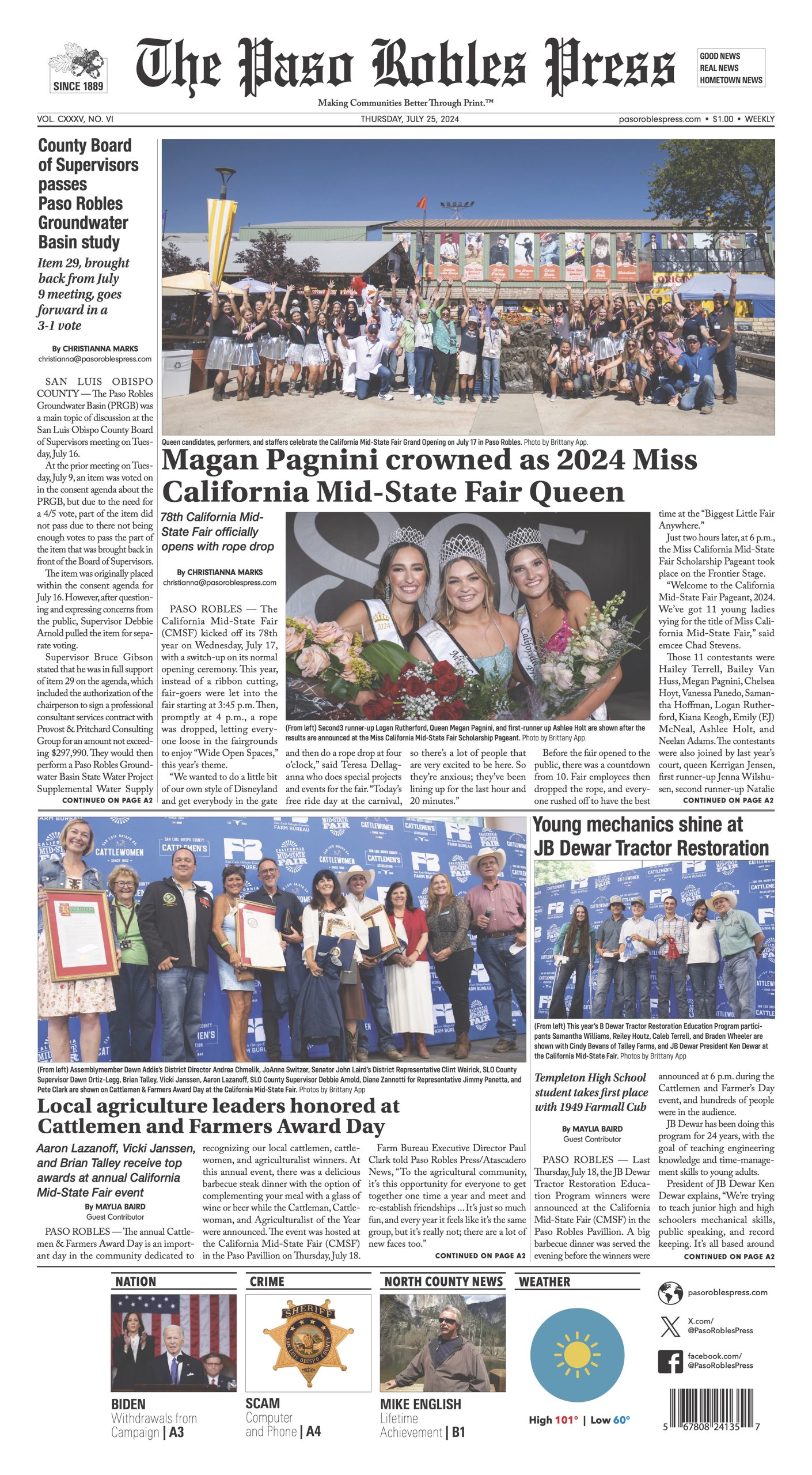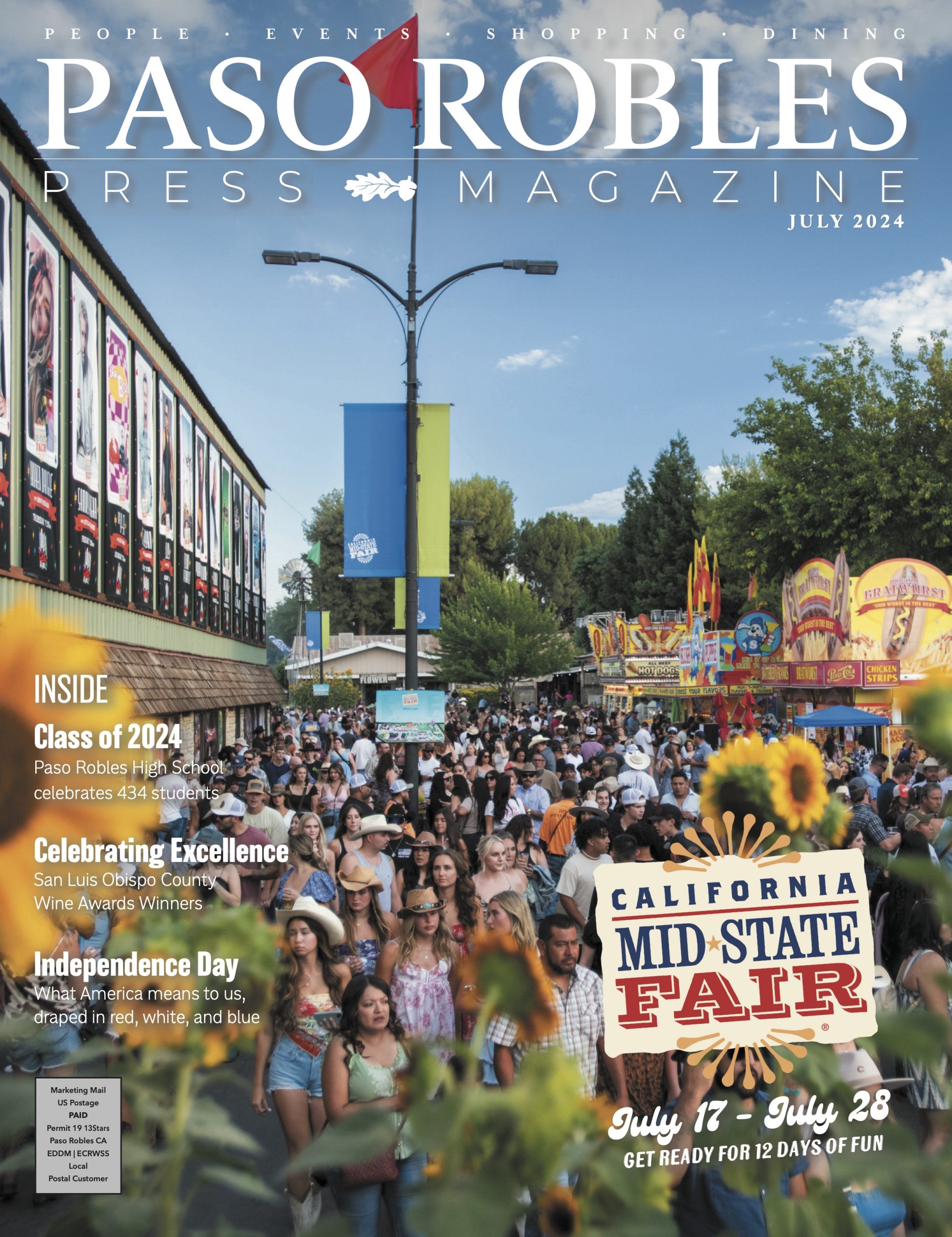When the Wright brothers took flight at the turn of the century, aviation was born and, with it, a new world of opportunities.
Opportunity is exactly what the Paso Robles Municipal Airport has brought to the City of Paso Robles, and this September, it celebrates 50 years. So as we celebrate this milestone, we take a moment to reflect on the airport’s past, stand in its present, and look forward to the future.
The Past
Like many airports around the country, the Paso Robles Municipal Airport’s origin goes back to World War II.
A headline from the August 27, 1942 issue of Paso Robles Press records the start of the airport with a headline reading, “U.S. Picks Estrella For Base — 1200 Acre Tract To Be Site For Marine Corps Air Field.”


At its inception, the United States Army negotiated and acquired just over 1,200 acres in the Estrella area for a U.S. Army airfield built on properties formally owned by A.M. Boyer, Otto Kuehl, George Matthew, John Moore, the Padian Estate, William Radloff, Tillie Schlecker, and Lillie Tuley. In just over six months, 2,000 construction workers had completed the airfield by April 1943, and the Estrella Army Airfield was up and running.
Used initially for training and night flights, over 1,500 military personnel were stationed at Estrella and the Navy auxiliary airfield southeast of Paso Robles, Sherwood Field. The original staff consisted of two officers, Lieutenants Raymond J Goetting and Edgar J McCullough, and 28 enlisted men.
The Estrella Warbird Museum has a record of some interesting accounts regarding the airport’s military days:
An interesting occasion was later related by Lt. McCullough, who told of the time when two Bell P-59s landed at Estrella AAFB. Those were America’s first military jets, and at the time were cloaked in secrecy, but everybody wanted to see the new airplanes that flew without propellers. McCullough walked towards one of them but was ordered by one of the pilots to keep away. He then identified himself as the base’s provost marshal (which he wasn’t) and not only got to see the planes up close but was also told that they were being used in experimental training to combat the German V-2 rockets that were creating havoc in England. The next day, a local farmer mentioned to him that a couple of planes had come over his field so low and fast that they blew his hay off the stacks.
By October 1944, the airport was inactivated and turned over to San Luis Obispo County for public use. By 1973, the County sold the air base to the City of Paso Robles for $1, and the Estrella Army Air Force Base officially became the town’s municipal airport.
The Present
At the start of the City’s takeover, the airport was home for 53 aircraft and commercial airline service Hughes Air West. By July 1973, the City’s first Airport Manager, Charles “Chuck” Miller, was hired, and the Airport Advisory Committee was formed.
September 1973 was when the first annual Paso Robles Airport Day and Airshow was held, drawing a crowd of 3,000 people.
Aviation was redefined in the 70s, going from primarily a military industry to being widely available to the private sector. With the simultaneous boom of agriculture, America was thriving. Ag pilots (crop dusters) ruled the rural skies, and with a growing economy, owning an airplane was as common as owning a car.




Today the Paso Robles Municipal Airport houses over 40 businesses, employing over 700 people. Many of these businesses lie outside the airfields fence; as an economic engine for the City, the airport has been a place where non-aviation businesses have been able to thrive. From the time of its acquisition, the City has held the airport in high regard. Not only is it the largest property they own, but it has held a view of being the City’s key to growth and opportunities.
“It is an economic driver for this community,” said Airport Manager Mark Scandalis regarding the airport’s position in the City dynamics. “It brings a lot of people to Paso Robles, providing an alternative means of access for those who fly in on their own aircraft.”
With over 250 clear weather flying days a year in Paso Robles, the airport is in an ideal spot for pilots to land, including the Royal Air Force, who recently transferred their training operations from San Luis Obispo County Airport to Paso Robles. The RAF hopes to make Paso Robles its base of operations for several months out of the year, citing good weather and proximity to nearby military ranges as Paso Robles’ advantages.
Airport Commissioner Tony Gaspar describes why the City supports the airport, “A healthy airport is vital to the economic growth and stability of a city.”
Now, after 50 years of ownership, the City is now looking to expand on the airport’s economic contributions to our local economy.
The Future
In 2022, the the Paso Robles City Council unanimously voted yes to submit pre-application information to the Federal Aviation Administration (FAA) for a spaceport license for the Paso Robles Municipal Airport.
The effort to earn a spaceport designation began as a way to diversify career opportunities within Paso Robles, which currently relies on wine and tourism for its economy. At the time of introducing the Spaceport, City staff noted several benefits the project would bring to the Central Coast, including economic development, education and training opportunities, research and technology (grants and other opportunities), potential to develop existing resources, utilities, and airport ecosystem.
There are currently 14 licensed commercial spaceports in the United States, including one in California, located in the Mojave Desert. The proposed Spaceport activity includes horizontal takeoff and horizontal landing (HTHL) only; vertical launches will not be a part of the Spaceport license application. HTHL spacecraft will operate within the airport environment much like current fixed-wing aircraft traffic and will utilize existing infrastructure to reach low earth orbit.
Additionally, Cal Poly San Luis Obispo submitted a letter of intent expressing an interest in exploring an operational relationship at the spaceport as part of its learn-by-doing plan. Cal Poly’s on campus think tank, The DxHub, and the City have partnered to draft the technical application associated with the FAA Part 420 Spaceport designation.
Paso Robles Municipal Airport 50th Anniversary Celebration
On Saturday, September 23, the City of Paso Robles is hosting a celebration at the Paso Robles Municipal Airport to commemorate 50 years of ownership.
“We will be celebrating the past, the present, and the future,” said Tony, who is looking forward to the many festivities planned for the day.
On the day of celebration, a variety of aircraft will be on display, along with presentations on the airport’s history and the future of the spaceport. Guests can look forward to food vendors, activities, and a chance to get to know their local airport.
Betsy Biscuit Bomber will be taking local veterans and military personnel around San Luis Obispo County for an Honor Flight, thanking them for their service to our Country.
This September, we not only celebrate the success of the airport, but we celebrate the up and coming collaboration between aviation and space — where the past will ride alongside the future.
PASO ROBLES PRESS MAGAZINE
Copies of Paso Robles Press Magazine are directly delivered to 23,000 readers in zip codes 93446, 93451, and 93465 and 2,000 dropped with support from advertisers and subscribers. Together, we are Making Communities Better Through Print.™
To subscribe or advertise, click here.













